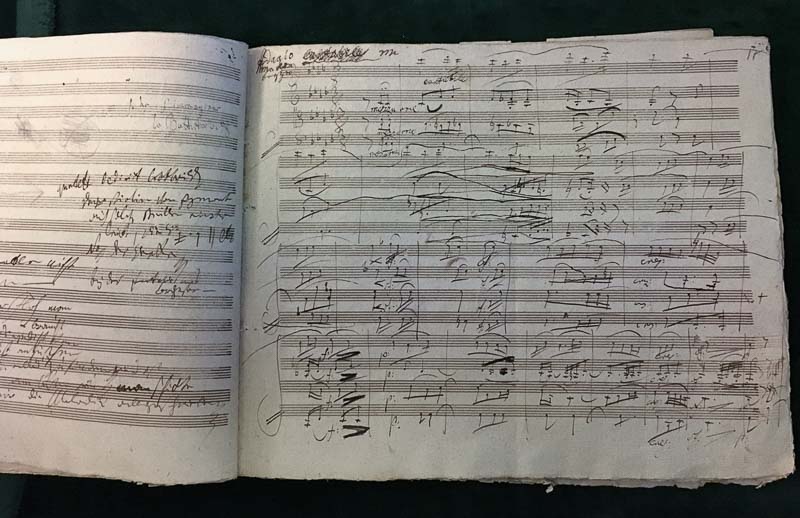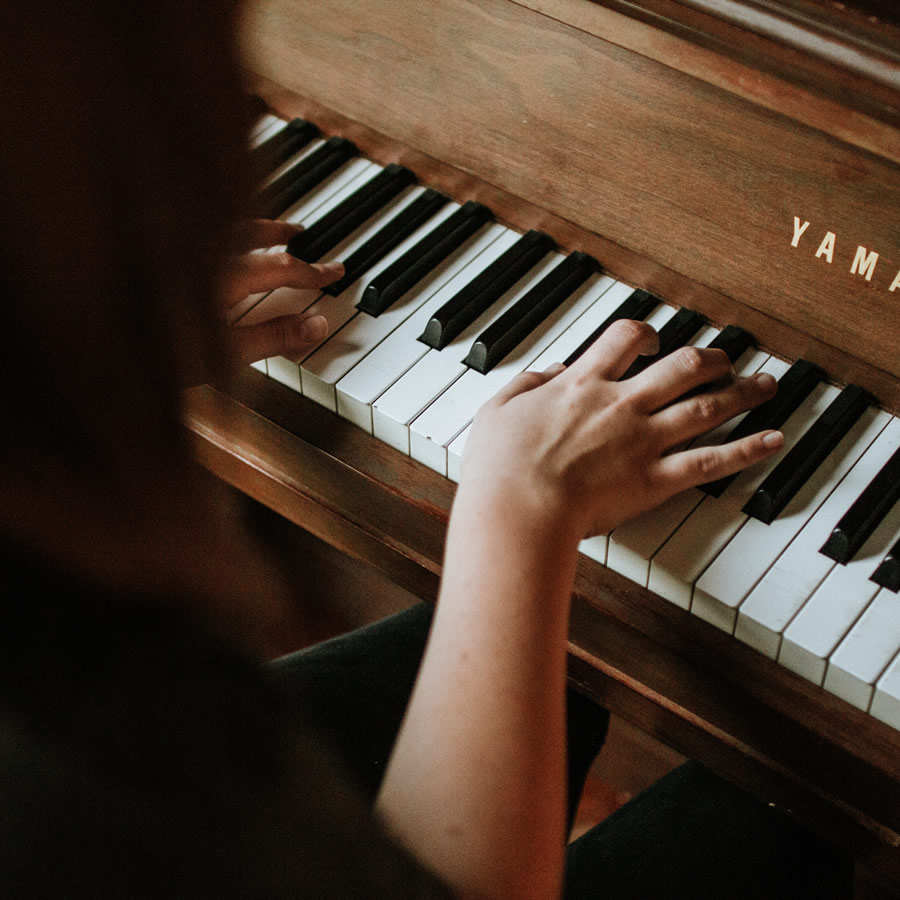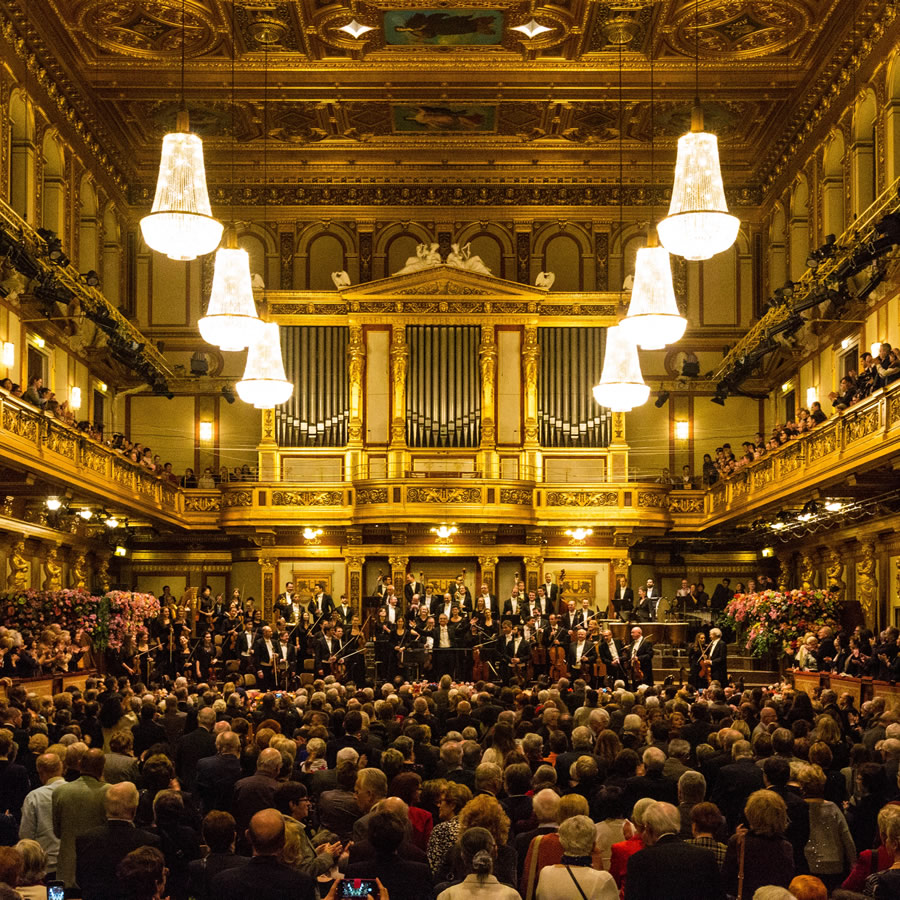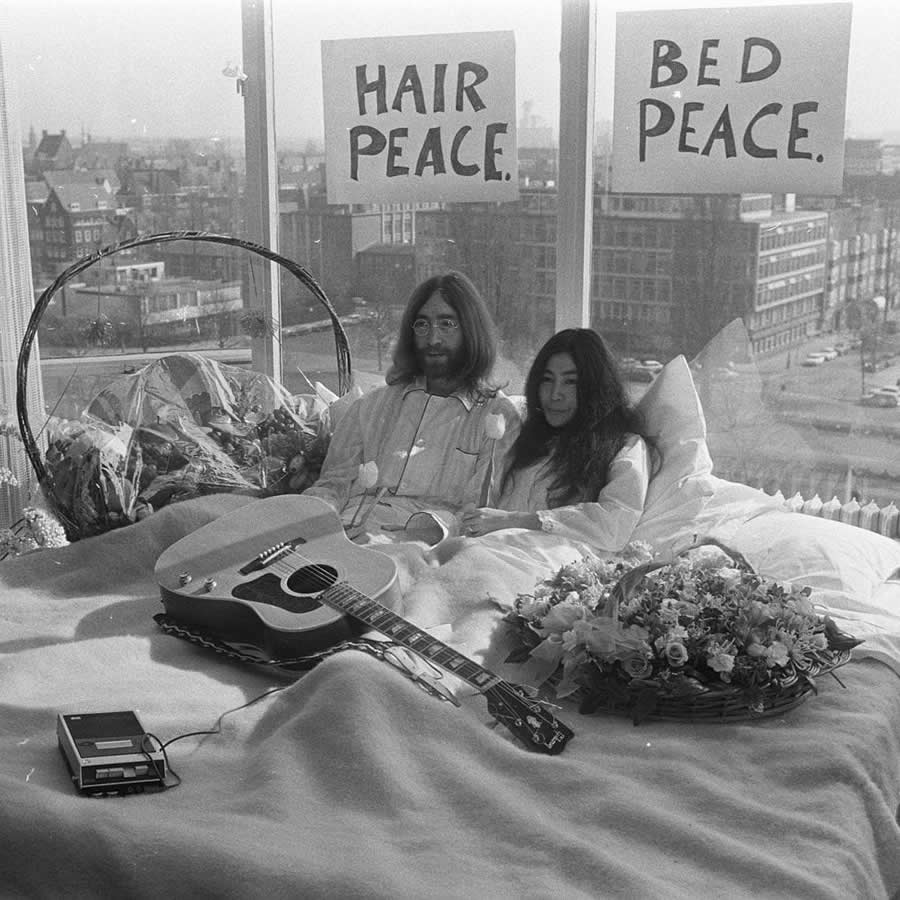The Neglected Muse: Why Music is an Essential Liberal Art
Reprinted with gracious permission from The Imaginative Conservative, where it first appeared.
Music transcends the classroom, the concert stage, and professional recordings. It pervades life. Mankind has long used music in all sorts of ways, to celebrate, to lament, to dance, to pray, to soothe or arouse, to woo, to infuse courage and terrify an enemy, to commemorate, to unite a community. Even the most primitive societies are keenly aware of the power of music, and various myths from cultures throughout the world confer on music and musicians a lofty, even divine significance. In some myths, notably in Plato’s dialogue Timaeus, the world springs from the composing power of a musician-god.
That music is a vibrant part of life is especially clear in the case of the young. Most young people cherish their favorite music as their most intimate friend and their absolute refuge from care and stress. When we get older, music is inevitably bound up with nostalgia. We older folk have only to hear a song from our youth in order to be magically transported, as if by a familiar scent, to a former time, place, self, or love. Music does not merely sound: It casts a spell and conjures worlds. Music is no mere addendum to human life, no historical accident that might just as well have never been, but an essential part of who we are as human beings.
Why should young people study music? One answer presents itself on the basis of what I have said so far: Music has a central place in the lives of young people. For many, music is their life. Teaching music to the young is therefore much more than conveying historical information and technical facts, or helping students develop their musical talent. It is more than the effort to make them competent and aesthetically refined. In getting young people to engage in a serious study of music, we are giving them an opportunity to know themselves better by becoming more precisely aware of the amazing power that music has over them. Also, as we shall see, we are giving them an opportunity to deepen their knowledge of the natural world – and of our connection to it – by becoming more aware of the mathematical order that underlies music.
Listening and Singing
In my three decades at St. John’s College in Annapolis, Maryland, where all students are required to study music for two years, I have learned that students cannot engage in substantive musical learning without actual musical experience. Such experience takes two forms: listening to and making music.
Listening is an obvious requirement, but it is harder than it might seem. What should students listen to in their music classes, and what should they listen for? We should, first and foremost, expose our students to great music in the classical tradition (e.g., works by Bach, Mozart, Beethoven, etc.) and then to other examples of great music (e.g., folk songs, blues, and jazz) – broaden their horizons, as the saying goes. But how to do this is difficult. It makes sense to start with classical works that are appealing and fairly short. For instrumental music, single movements from symphonies, piano sonatas, and string quartets work well. Perhaps the best “first thing” to listen for is simply that musical works have a beginning, middle, and end. Students can listen to a given piece several times, each time listening for some particular aspect of the work: a recurring theme, a rhythm, a moment of heightened tension, etc.
But listening by itself is not enough. Students, by singing or playing an instrument, must be made to realize that music is not the symbols on the page any more than a poem is the written word. Music and poem come to be what they are only in the act of sounding. The object of musical study is not the written symbol but the musical event – the living phenomenon, for which the score is but the recipe. More than anything else, singing brings music to life and overcomes the passivity that often attends the act of listening. In singing, students are the instrument and the music. Most important here is not that students sing well, but that they make their best effort. In singing great choral works, however imperfectly, students get to experience one of life’s most humanizing pleasures: that of cooperating with others in the attempt to form a beautiful whole that is more than the sum of its parts. Students thus attain in sound the ideal of a perfected human community – a perfected friendship that preserves differences but renders them harmonious. To sing is to transcend the isolation and vagary of selfhood. Such transcendence is one of the greatest gifts of a genuine liberal education.
Music’s Connection to Math and Nature
Music, amazing in its power over our emotions and character, is even more amazing because it is eminently capable of being studied. Traditionally, music is one of the seven so-called “liberal arts.” Liberal, here, has nothing to do with its current, political usage. It is not a synonym for progressive. Rather, it is derived from the Latin liber, meaning free, and is best associated with words like liberate. The liberal arts constitute the knowledge that free people need to guide them in their decision-making at home, at work, as neighbors, and as citizens. The system of seven liberal arts was first developed and taught in the Middle Ages and has continued to strongly influence education down to the present day. The liberal arts are divided into a trivium (which is Latin for the three ways or roads) and a quadrivium (meaning four ways or roads). The trivium consists of the arts of grammar, logic, and rhetoric; the quadrivium consists of the arts of arithmetic, geometry, astronomy, and music. The former develops the arts of language, the latter the arts of measurement. Together they provide a template for a so-called “liberal education,” whose end is not a technically trained professional, but an educated human being.
As a quadrivial art, music has an exalted placement that points to the long acknowledged bond that music has with number and nature, and sharply distinguishes it from the visual arts. The connection between music and mathematics was established by the legendary Greek, Pythagoras. Pythagoras discovered that the most commonly used (and most singable) musical intervals had intelligible mathematical counterparts.
Let’s use the octave as an example. To the musician, notes that are one octave apart sound alike—the only difference is that one is higher, or lower, than the other. Modern science tells us that an octave is a musical interval in which one note has either double or half the frequency of another note—if one note has a frequency of 400 Hz (hertz or cycles per second), the note an octave above it has a frequency of 800 Hz and the note an octave below has a frequency of 200 Hz. So, the ratio for an octave is 2:1.
Pythagoras discovered this connection without the knowledge of frequencies: He simply divided a string in half and, to his utter amazement, heard that this division produced the octave. Likewise, he discovered that when one string is two-thirds the length of another, it will produce a higher note that fits another common musical interval, a perfect fifth (the first melodic interval in “Twinkle, Twinkle, Little Star”). This discovery – that notes that sound good together can be represented mathematically with ratios of small whole numbers – was far-reaching; it suggested that great music was not just a matter of taste and convention, but was grounded in the very nature of the physical universe – which could explain why humans respond to it. Our sensuous experience of music might, in fact, be a deep if unconscious response to an intelligible order: The most common and singable musical intervals might be ratios that we automatically sense. Moreover, it suggested the possibility of a mathematical physics. If precise, discoverable, numerical ratios were at work in the relationships between notes separated by common musical intervals, then wouldn’t they also be at work in, say, the relationship between distance and the time it takes for an object to fall to the ground?
It is easy, and fun, to recreate the Pythagorean discovery by experimenting with different divisions of a string on a device known as a sonometer or “measurer of sound.” Sometimes it is called a monochord because you need only one string to do Pythagorean experiments. But the device works best when it has two strings: one that is divided and another that is not, so that it can serve as a reference pitch. A sonometer is very easy to make, as I discovered when my son and I constructed one for his high school science project. All you need is a thick board, metal strings, a few screws, two small bridges to anchor the strings at both ends, a small moveable “bridge” that is used to divide the string at various points, and a meter stick to take measurements. High school students can use this simple musical instrument to verify that the most common musical intervals do indeed correspond to ratios of small whole numbers. They can do this in two ways. One way is to measure off a length of the string that corresponds to a given ratio (say, 3:2, or two-thirds the length of the undivided string), move the bridge into place, and then pluck the resulting partial length (the two-thirds length) to hear if the predicted interval sounds (the perfect fifth). The other way is for the students to move the bridge around under the string, plucking and listening at each point, until they reach what sounds like a given interval and then use a meter stick to determine the ratio into which the string has been divided. The octave is especially interesting because of its simplicity and familiarity. Knowing that its ratio is 2:1, students can divide a string exactly in half without ever using a visual measuring device. All they have to do is listen for the division that sings the octave.
This simple Pythagorean experiment is a real treat for students, who invariably experience amazement at the mathematical grounding of music in nature. The experience helps their learning in a number of ways. It makes them realize that the musical intervals and the scale acquire a precise definition only through the power of mathematics (ratios); that the practical problem of tuning a stringed instrument like a guitar or a piano is a mathematical problem of getting different ratios to fit with one another in a consistent scale; and that the tuning they have inherited (the 12-toned equal temperament in which an octave is divided into 12 equal half-steps) is the product of a rich, complex history marked by incredible ingenuity and laborious effort.
Music Shapes Us
Even apart from this profound connection with mathematics, music is pre-eminent among the arts for the order and clarity, the sharply defined character, of its elements. Music moves us, sometimes to overpowering emotion. It does so through well-defined structures, through an order of tones and rhythms. It is not the mere sound of drums but their rhythmic beating that stirs us. Here we come upon the central paradox of music, the paradox that defines music as a worthy object of sustained intellectual wonder: Music is the union of the rational and irrational, of order and feeling.
Ultimately, by shaping feeling, music shapes the whole human being. For a proper understanding of this, we turn to the ancient Greeks, for whom music, far from being morally neutral, played a decisive role in moral education. Aristotle’s Politics ends with an extensive discussion of the proper moral and political uses of music and the effect of music on the souls of citizens. In the Republic, Plato draws our attention to the power music has over the young. He places special emphasis on the danger of music. The severity of his critique underscores what we, in our effort to excuse or defend music, often fail to acknowledge: that music is a great power and, like any great power, can be used for great good or great evil. Why is music so emotionally powerful, far more powerful than the visual arts? Plato provides a possible answer. In the Republic, he calls upbringing in music “most sovereign” because rhythm and concord “most of all sink down into the inmost part of the soul and cling to her most vigorously.” In experiencing music, we do not behold from a distance but drink in and incorporate. Some forms of music, so Plato claims, are conducive to orderliness of soul and the love of grace and beauty; others indulge the baser passions and feed the lust for disorder and self-indulgence. Studying music as a liberal art gives students the opportunity to consider the possibility that Plato is right – that music is not limited to taste and enjoyment, but has a powerful influence on who we are and whether we are ennobled or debased.*
This leads me to the observation that we are shaped not only by music, but also by our opinions about music. It is all the more important to revisit the connection between music and moral education in a culture like ours, steeped as it is in self-indulgence and vulgarity. The study of music as a liberal art gives students an extended opportunity to scrutinize their opinions—and to confront the causes and effects of their passions.
Cultivating Musical Taste
By studying music, we want to cultivate our students’ taste, encourage their appreciation of beauty. But what is this beauty? Why do we say that an aria from Mozart’s Magic Flute or a movement from Beethoven’s Ninth Symphony is beautiful? Although a complete definition of beauty is beyond the scope of this essay, I will venture a few remarks on this topic.
I begin with the old saying, “Beauty is in the eye of the beholder” (or the ear of the listener). This saying is both obviously true and obviously false. True because beauty exists only in relation to a responsive subject: It must appear beautiful to someone. False because merely thinking that something is beautiful does not make it so – judgments of beauty are not relative. Thinking that they are confuses judgments of mere subjective liking with judgments of aesthetic taste, which always claim to be objective and universal. After all, beauty is not the same as pleasure. Just as beautiful things do not always immediately please, pleasures are not always beautiful. We can take pleasure in something ugly and base. Beauty is not a feeling in a human subject but a quality we perceive in an object. The perception comes first, then the emotional response. Beauty can take us by surprise. It strikes, pierces, even transforms us. This would not be possible if beauty came from us. Beauty educates us by taking us outside ourselves. It compels us to transcend self-interest and self-feeling. We do not merely behold beauty, but look up to it. In appreciating beauty, we admire that which deserves to be admired. To cultivate taste is therefore to cultivate judgment. Beauty, in short, is in the eye of the educated beholder.
Moreover, the beauty of a great musical work is not always immediately evident. Sometimes it takes time, and training, to realize that it is beautiful. Students often say that a piece they did not like at first became one of their favorites with repeated experience of it. Their taste changed, not because they got used to something they didn’t like, but because an inherent quality eventually became apparent to them. There is an ancient Greek saying: “Beautiful things are difficult.” This is true to our experience of beauty, which sometimes comes to us only if we make an effort to go to it.
In order for beauty to be admired, it must first be recognized. As discussed in the previous section, there is a long tradition that connects beauty and order, especially mathematical order. The musician and mathematician Edward Rothstein, in his book Emblems of the Mind, shows how mathematical relations underlie the beautiful in music. He writes: “A composition is a construction of patterns and proportions, resembling an argument in mathematics.” Relations like symmetry and various sorts of proportion are, in fact, evident in the works of the great composers.
But mathematics, though beautiful in its own right, cannot fully explain the beauty of music. By itself, it cannot explain our response to a Mozart aria or a Beethoven symphony. Why do these pieces continue to attract listeners who become familiar with them all around the world, not just in the West? These pieces seem not to have been written for one country, people, or time. They are universal and belong to everyone. They strike us with their amazing wholeness and perfection. Everything seems to fit and cohere in a carefully worked out scheme. The orderliness is not merely correct but inspired. With time and effort, most of us can detect the layers of order and the balance of forces at work in these pieces: the architecture of the whole. We can detect how tensions build and are sustained, and how they are satisfyingly resolved. We can even learn to identify the technical means by which these effects are produced. We hear how a theme is announced and then developed, how it seems to take on a life of its own, occasionally even seeming to spin out of control only to be brought back into the economy of the musical whole.
Beautiful music pleases and sometimes challenges us with its intelligence, depth, and complexity. It does not please for the moment, but invites endless re-experience and return. The more we listen, the more we hear. And the more we study the music, the more reason we have to find it beautiful. Music unfolds in time and exhibits a delightful play of forces or tensions. In music, the question of beauty comes down largely to this perception of how musical forces conspire to form a whole.† These forces or tensions are at work in the familiar major and minor scales, and in the chords of harmony. Great musical works exploit these tensions to the fullest. That is why they are both maximally ordered and emotionally potent, why, as we say, they are beautiful.
Learning from a Simple Melody: Scarborough Fair
Music education that aims at real knowledge requires careful attention to the elements of music: tones, time-values, intervals, etc. Students must learn to read music and correctly identify notes on a staff. Soon after this “basic training,” they should look closely at how the elements conspire to form significant musical wholes. These wholes need not be impressive compositions by well-known composers like Bach and Mozart – they demand way too much all at once. A better way to begin is with a folk song.
Scarborough Fair, the very old folk song made popular by Simon and Garfunkel in the ’60s, is a good example of a beautiful, simple melody that lends itself to close analysis. With the right guidance and materials, even the most musically naive students can begin to engage in a deep and thorough analysis of this haunting melody.
One of the problems in getting students to think about music is that it comes to us too easily. It seems to be right there for our immediate pleasure. Music does not, by itself, raise questions. One way to generate questions is with a series of “experiments.” Play the melody on the piano several times and have the students sing along. Then change one note and get the students to state, to the best of their ability, how they think the melody has changed in sound and “feel.” Do this with different notes in the melody and examine each change in turn. At each point, ask, “What happened? What was the effect of the change?” Changing a note in a melody – in effect, disrupting a familiar whole – is also a good way to get students to become aware that there is a whole. What is right sounding about a melody comes to light when we cause it to stray from its intended path and sound “wrong.” Students then begin to realize that the melody consists of carefully made choices, and that a change in one part is a change in the whole. Such experiments become even more revealing when we alter the melody’s rhythm.
Next, students should explore the connection between the notes of the melody and the words. To do this thoroughly, they should have access to the complete text (whose story is very sad). Does the sound of the melody fit the meaning of the words? What do the words gain in being sung? Does the melody make certain words stand out? How does the rhythm affect the mood of the song, the meaning of the words, and the story they tell?
Finally, students can compose a variation of Scarborough Fair, perhaps with their own lyrics. In this exercise (which I have found works beautifully in class), students learn, through direct experience, that composition involves revision: that certain musical choices don’t work, that some work better than others, and, more generally, that a piece of music (like a piece of writing) can be improved.
A simple, familiar folk song is a musical education in itself. The examination of simple melodies encourages students to give reasons for what they feel. This liberates them from the erroneous and stultifying opinion that a response to beauty is based solely on subjective feeling (that beauty is “relative”) or habit (that we hear musical events as we do only because we’ve heard them repeatedly). It reveals, in highly specific ways, that human feeling is complex, that our emotional response to beautiful sound is grounded in a remarkably precise, if usually unconscious, perception of order. Similarly, examination of simple melodies reinforces the trust that analysis, however abstract it may seem at first, can lead us back to our musical experience with renewed wonder, a keener sense for the details of a beautiful whole, and a more intense and discerning pleasure. By analyzing Scarborough Fair, we get a better idea of what to listen for in this melody. We also come to understand it better and, as a result, appreciate it even more. To borrow from Elizabeth Barrett Browning’s famous poem, it is like being able to “count the ways” in which we love someone.
Music as a Liberating Art
The study of music has several goals. One of them is to improve, through education, students’ aesthetic taste: to introduce them to truly great music in an effort to beget a love for all things graceful and well formed. As a music teacher, I hope that the study of music begets in my students a habit of searching for the causes and details of beautiful things, and that the love of beauty will nourish the love of knowledge and truth. As students’ intellects are opened to the power of music, I hope they will strive to imitate in their day-to-day lives the musical virtues of harmoniousness, proportion, good timing, appropriate flexibility or grace, and “striking the right note” in thought, speech, feeling, and action.
Music, as I noted earlier, is one of the traditional liberal arts. It liberates us from vulgarity, intellectual rigidity, and the tyranny of unexamined, popular opinions about music and beauty. Music does this by encouraging human fellowship (in singing), by inspiring a love of beauty that transcends the mere gratification of desire, by making us more attentive to the elements and causes of our emotional response to beauty, and by compelling us to test conventional opinions against the standard of our own experience.
Music, alas, is the neglected Muse of educational programs across the board, from kindergarten to college. One reason for this is a failure to perceive the importance of music in the education of the young and in human life generally. Another is the tendency to regard music as a “soft” subject– there for the sake of amusement or a vague sort of “music appreciation.” Yet another is the opinion that music is not basic to our human nature, but is the prerogative of a trained or gifted elite – something that only those with the potential to be professional musicians need study. I have endeavored to show that none of these is true.
If studied as a liberal art (i.e., in order for the student to become more inquisitive and reflective and more aware of music’s power) rather than as a fine art (i.e., in order for the student to become a musician), music gets students to look beyond surface distinctions in order to seek out deep, underlying harmonies or bonds between things apparently remote. In the breadth of its domain, in its union of the mathematical and the poetic, and in its involvement of the whole human being (body, heart, and mind), music is an essential liberating art.
*It is interesting to note that the Greek word for beautiful (kalos) also means noble just as the word for ugly (aischros) also means base.
†For discussion of the treatment of tones as forces, see the Sense of Music by Victor Zuckerkandl, Princeton University Press, 1959.











